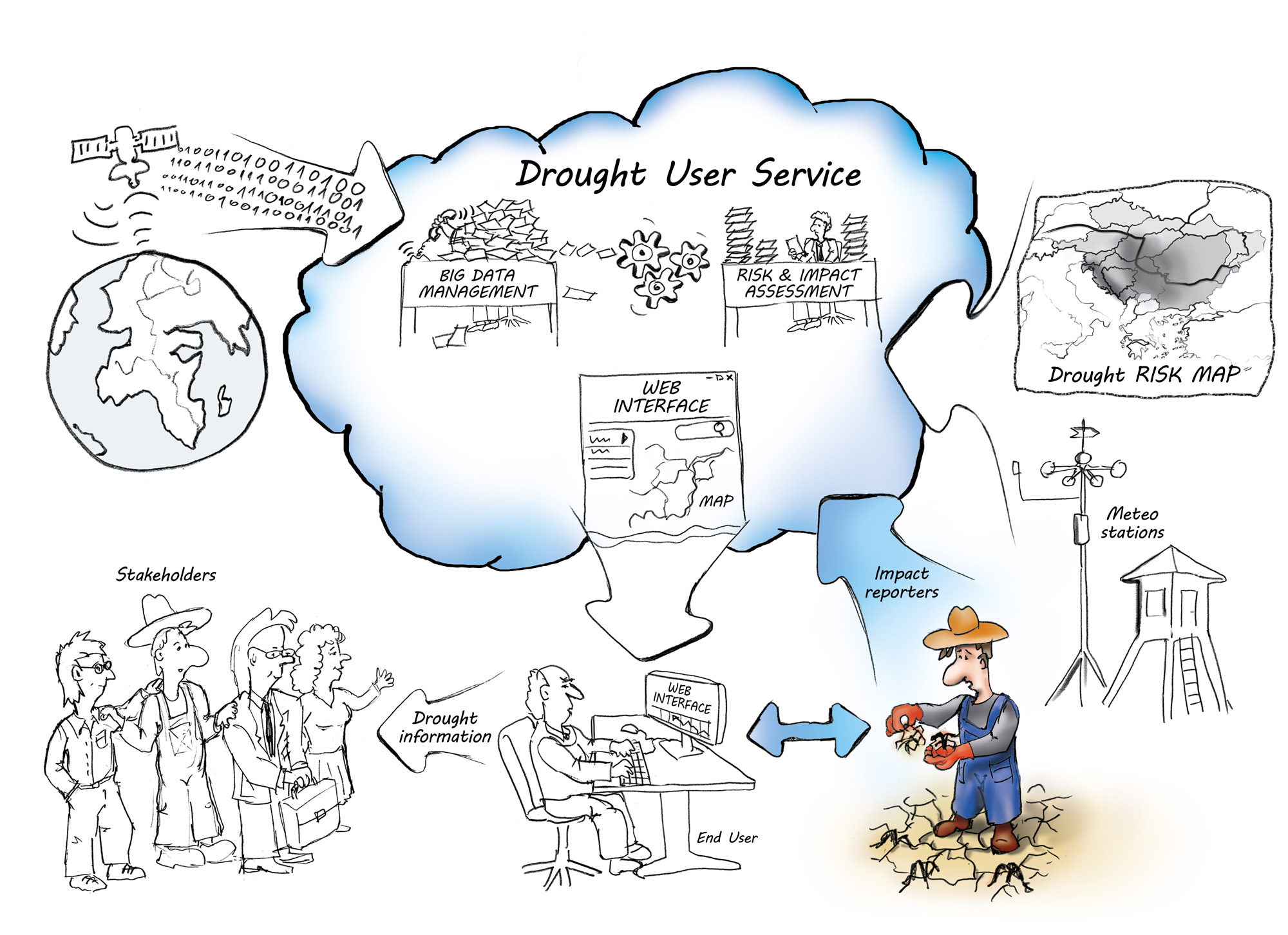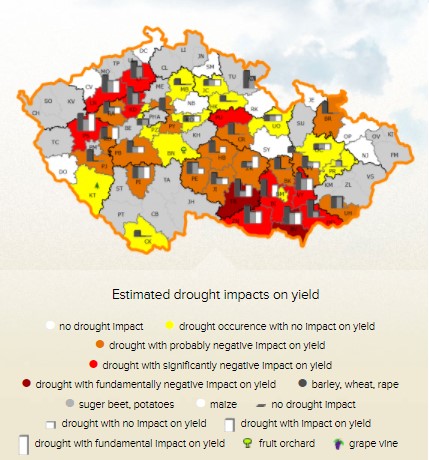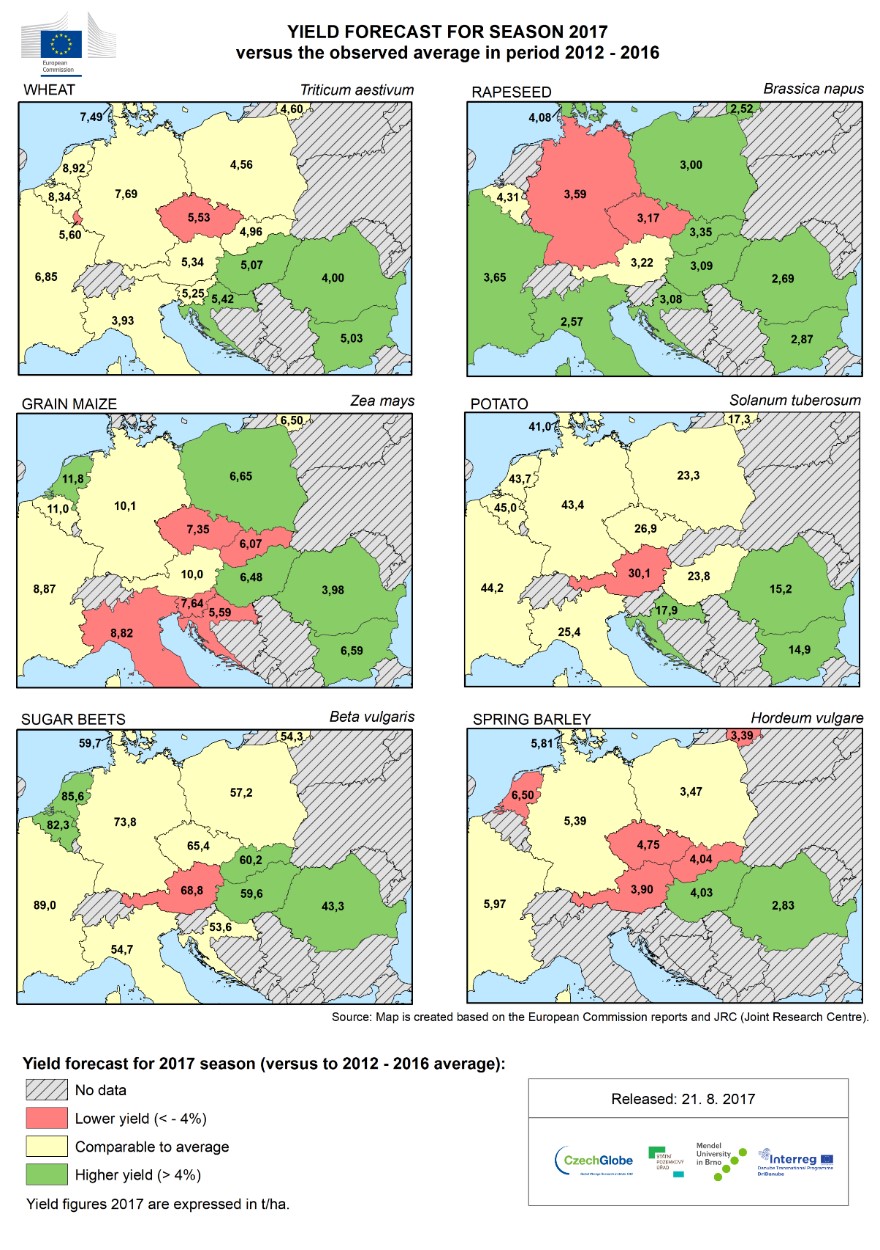DriDanube - Why drought impact assessment and forecasting matters?
28-05-2018
Presentation of the Work Package on Drought Impacts
DriDanube project is striving to improve capacity of the Danube region for drought emergency response. How we want to achieve this task in practice has already been partly described in our article about an innovative and interactive tool we are preparing, the Drought User Service (DUS).
Drought can cause devastating impacts on the environment and society. These impacts make understanding and monitoring drought extremely important. Scientists usually look only at the drought indicators to get the picture of the current drought situation. DriDanube project wants to combine this with the information on drought impacts “from the ground” to fully characterize the current drought condition.
“One of the problems in drought management is the missing information about the drought impacts across the region. We need the knowledge about the impacts early in the season to be able to prepare early estimates and warnings about the size of the impacts. Based on the proper estimates we can take adaptive measures and limit the damage costs.“ Mirek Trnka, the CzechGlobe.
Apart from the remote-sensing based layers of the DUS, that will allow us to estimate the soil water content and condition of the vegetation, there will be an add-on value of integrated data on near-real time drought impacts that will allow quick and efficient assessment of the current drought situation. This kind of data will be collected through the National Reporting Networks.

Infographic: National reporting networks are an important part of the information processes within the Drought User Service.
In order to improve management of drought risks and drought events, it is also critical to estimate not only drought intensity but also expected impacts. Therefore, forecasting of impacts is an important part of the efficient drought monitoring and management.
Monitoring of drought impacts in near-real time
Drought impact assessment methodology will be based on the data from the drought reporters (National Reporting Network) about the current state of the soil and vegetation. Reporters will communicate their assessments through the online questionnaires on a weekly basis. The questionnaire will be standardized to allow comparison across the region. Based on these data, the map of current drought impacts will be created and published on a web page. If you are interested how the whole National Reporting Network will function and what are the experiences from the DriDanube partners, please check it here.
There should be at least 2-3 reporters for each NUTS3 region, but that kind of network is impossible to build during the course of the project. DriDanube is therefore building the base for the establishment of the whole methodology/process and is training partners on how to build the network and use methodology in practice.

Map of drought impacts; example from the Czech Republic (source: InterSucho)
Drought impacts forecasting
DriDanube also wants to go a step further, i.e. not only to monitor impacts in near-real time, but to develop a methodology that would allow forecasting of drought impacts. Partners are currently working on the following information on which the forecasts will be based:
- impacts provided by the National Reporting Networks;
- statistical model driven by ground observation data and remote sensing data (provided by DUS);
- historical drought impacts data extracted from press sources (for period 1981 – 2016) and regional yield series.

Example of the Yield Forecast map for 2017 session; (source: CzechGlobe from the data provided by DriDanube partners)
DriDanube stakeholders are in this case both, the users and providers of the information. They will be able to access the maps of drought impacts and forecasts of the area of their interest within the Danube region. This kind of information will support future activities of the farmers (e.g. for irrigation schedule), hydro-meteo services (for preparation of the drought early warning products), decision makers (for being aware of the situation on the field and what is expected in the future) and journalists (to inform general public before drought and raise awareness about the drought conditions around the region). Unified drought impact assessment and forecasting is therefore the key ingredient for better drought management in the Danube region.
